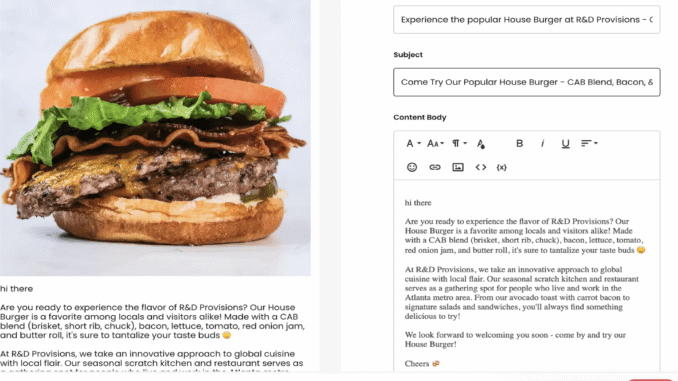
By Debbie Carson, RTN editor - 6.22.2025
Across the restaurant landscape, a quiet revolution is underway. It’s not about new flavors or faster delivery; it’s about algorithms. Specifically, generative AI, a branch of artificial intelligence that’s no longer just the domain of tech giants or lab experiments. It’s now showing up in places like drive-thrus, digital menus, and even back-office kitchen dashboards.
Take Wendy’s, for instance. The chain’s collaboration with Google Cloud has given birth to FreshAI, a voice assistant designed to take drive-thru orders with near-human fluency. What started as a pilot in Ohio has grown to over 100 locations and counting. Managers say it’s trimming average service times and reducing order errors. While the system still occasionally hands things off to a human when things get tricky, the accuracy is steadily climbing—with some reports suggesting close to 99 percent accuracy when staff intervention is factored in.
And Wendy’s isn’t alone. Checkers & Rally’s has been rolling out a voice AI solution from Presto Automation in hundreds of locations, while Panera has tested OpenCity’s “Tori” to streamline order-taking. Even Taco Bell has jumped into the game, experimenting with both guest-facing voice assistants and internal AI-powered coaching tools for managers. These tools don’t just help take orders. They make suggestions, upsell, and learn from each interaction.
Of course, AI’s influence isn’t limited to the drive-thru. Behind the scenes, platforms like Biz4Group are using generative AI to help restaurants rethink how they design and present their menus. Their proprietary tool, Mtiply, goes far beyond simple templating. It creates descriptions, recommends pairings, generates images, and adapts menu layouts based on real-time sales data and inventory. Operators who’ve adopted the tool report revenue lifts of up to 30 percent, thanks in part to more compelling language and better alignment between what’s on offer and what customers actually want.
Chowly, meanwhile, is helping small and mid-sized restaurant groups juggle the complexities of digital ordering. It syncs menus and pricing across third-party delivery platforms, updates Google business listings in real time, and feeds sales data back into smart pricing engines. One client, a regional juice bar chain, used Chowly to move nearly 8 percent of its off-premise orders from third-party platforms to its own digital channels. That shift alone made a noticeable dent in commission fees and boosted profits.
On the marketing side, companies like Popmenu and Lunchbox are giving independent operators the kind of personalization power that was once reserved for the big chains. Popmenu generates content, promotions, and even automated email outreach based on guest behavior. Lunchbox uses AI to recommend dishes based on past orders and to test what pricing sweet spots work best for specific customer segments. The key is that operators don’t need to be data scientists to use these tools. They’re designed to run in the background, nudging outcomes in the right direction.
Even the kitchen is getting smarter. Systems like ClearCOGS are predicting how much of each ingredient a restaurant will need days in advance, down to the SKU. Platforms like Toast and Square are baking predictive wait-time estimates into their kitchen display systems, helping line cooks stay ahead of the curve.
What ties all of this together is infrastructure. Many of these tools rely on cloud platforms like Google Cloud, Amazon Web Services, or Microsoft Azure. But increasingly, they’re bringing compute power closer to the action into the restaurant itself via edge computing. That means faster processing, better reliability, and more real-time responsiveness, whether you’re placing an order, clearing a table, or managing inventory.
There are still wrinkles, of course. Voice AI systems occasionally mishear orders. Generative descriptions sometimes veer into the overly flowery. And for all the talk of automation, there’s still no replacement for a well-trained human staff. But in an industry where margins are razor-thin and customer expectations are constantly rising, these AI tools aren’t just a novelty. They’re fast becoming essential.
In the end, what we’re seeing is less about replacing people and more about augmenting them—giving restaurant teams tools to work smarter, serve faster, and engage more meaningfully. It’s early days, but the direction is clear: from menu to mouth, AI is changing the way restaurants do business.

